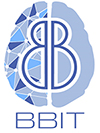The group of cognitive processes called executive function (EF) includes the flexible control of attention, the ability to hold information through working memory, and the ability to maintain inhibitory control.
These cognitive processes are crucial for learning, especially for young children. These help students control their anxiety when they face challenging academic tasks. However, the same processes can be undermined when learners experience chronically stressful situations like poverty, homelessness, and criminal environments. Exposure to such experiences early in their childhood interferes with their development of executive functions, hampering their ability to manage challenging situations. In the long run, our best solution so far is to help such children to invest in programs that reduce their exposure to chronic stress.
The advancements in neuroscience and psychology help reveal the pathways that connect young children’s higher-order cognitive skills, emotional skills, and whether they succeed or struggle in the challenging academic environment. Researches have already established how the cognitive and emotional domains of children’s brain functions are wired together in both top-down and bottom-up fashion. BBIT is a significant educational intervention that targets executive functions while exploring their impact on children’s opportunities for learning.
Impulsivity
It is widely assumed that impulse control plays a significant role in self-regulation. Nevertheless, the cognitive mechanisms that facilitate the control of impulsive determinants like automatic affective reactions toward stimuli that are tempting are still undergoing extensive research.
Almost every human being, time and again, face the challenge of resisting tempting impulses. This is largely due to the interference of the immediate enticements such as the delicious dessert or the relaxing cigarette with vital long-term goals such as maintaining good health. It’s a no-brainer to say impulse control is necessary to resist temptation.
Factors affecting impulse control
To really understand impulse control, we must identify the exact mechanisms involved in the resistance to temptation. Research on self-regulation draws some factors pertaining to attentional, inhibitory, and affect-regulatory mechanisms.
The first factor has been identified as the ability to control attention. Correspondingly, researchers have established that low executive attention (the domain-free ability to control attention) is associated with a larger impact of impulses on self-regulatory behavior.
The second factor relates to the general capacity to inhibit prepotent responses. More specifically, inhibitory control is required to prevent impulsive precursors from influencing overt behavior through the activation of behavioral tendencies to approach a temptation of interest.
The final factor is the down-regulation of the hedonic affect involved in impulse control. Here individuals who spontaneously down-regulate activated affect may be less prone to being influenced by impulses than those for whom activated affect persists so that impulsive influences on behavior become less likely.
Inhibition
It is the ability to control impulsive responses and create responses by using attention and reasoning. It directly contributes to anticipation, planning, and goal setting. It stops inappropriate automatic reactions, switch to better, more thought-out responses that are congenial to the situation. Non-inhibition may manifest itself in three different levels.
- Motor – Poor control in motor behavior could lead to hyperactivity.
- Attentional – Results in distractibility and difficulty paying attention.
- Behavioral – Leads to impulsive behavior that cannot be inhibited.
Inhibition is one of our most popular cognitive functions. It is how the brain corrects a behavior. This function makes it possible for us to stay quiet when we want to say something, but know that we shouldn’t. It allows us to react to unforeseen or risky situations safely and quickly. Inhibitory control makes it possible to perform better academically, at work, at road, and with other people.
Factors affecting inhibition
It is quite common for people with prefrontal lobe brain damage to suffer from non-inhibition. The brain damage could be due to stroke, encephalopathy, or tumor. The non-inhibition could result in a series of behavioral issues ranging from simple incessant talking to the inability to inhibit what they say or do.
Alcohol and drug can severely affect inhibition. Alcohol intoxication causes alterations in inhibitory control and alcoholism can have a permanent effect on inhibition. Binge drinking also can damage inhibition similarly to alcoholism.
The Role of BBIT in Evaluation
Neuroscience, developmental science, and education research have given us new ways to understand the recursive neurocognitive and emotional processes that underlie a learner’s success or failure while learning. There are a large number of clinical and educational tools designed to directly target children’s attention, working memory, and inhibitory control. Self-regulated learning strategies and targeted brain training approaches have been developed to evaluate and manipulate the weaker executive functions.
BBIT is a significantly superior approach that has been extensively tested and proved to have significant gains in the evaluation and treatment of vital cognitive functions. Apart from enabling teachers and curriculum developers to deliver programs to enhance the cognitive processes that form the foundation of academic learning, it assists the clinicians in the diagnosis of impaired cortical functions as in stroke, epilepsy, and traumatic brain injury.
BBIT is used wherever the levels of intellectual ability need to be measured over the spectrum of the intellectually challenged through the intellectually gifted. The BBIT aims to:
- Measure IQ of individuals between the age group 5 and 20 years.
- Diagnose impairment of cortical functions.
- Evaluate cognitive impairments responsible for the difficulty in reading and maths.
- Provide a framework of intervention for cognitive training and rehab.
In sum, BBIT can lead to the assessment and design of interventions to regulate a learner’s higher-order cognition to shape beliefs, mood, effort, and outcomes in ways that are empowering and liberating. It also gives rise to an exceptionally innovative area for further research in higher cognitive functions and the significance of evaluating the parameters of impulsivity and non-inhibition.

